
Math Instructional Routine Guide: “Which One Doesn’t Belong”
This instructional guide offers a powerful and accessible routine to refine your students’ mathematical skills and ignite their curiosity and skepticism.
Blog Post
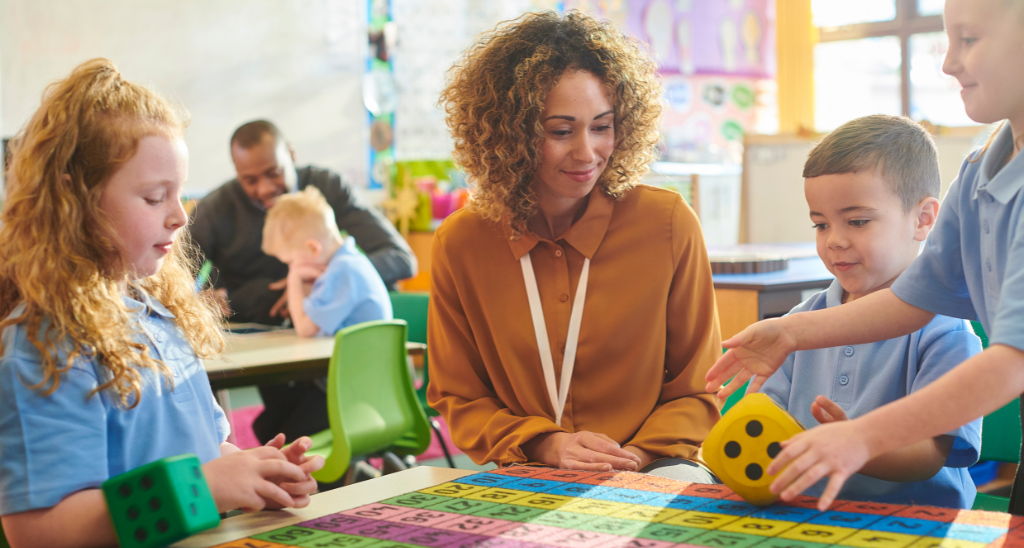
Imagine a classroom buzzing with engaged students who are curious about math and actively building their own understanding. They feel confident and supported, empowered to embrace challenges and apply themselves to new ideas. This isn’t just a feel-good scenario – it’s a combination of factors that work because they’re grounded in science.
Active engagement in math ignites a constellation of brain regions, forging robust connections and enhancing knowledge retention. This brain activity provides a view into the learning process, which can empower us to tailor math instruction to students’ inherent potential.
By leveraging these insights, we can refine and build upon evidence-based practices, fostering rich learning experiences and environments where students cultivate mathematical competence. The components for building mathematical competence are:
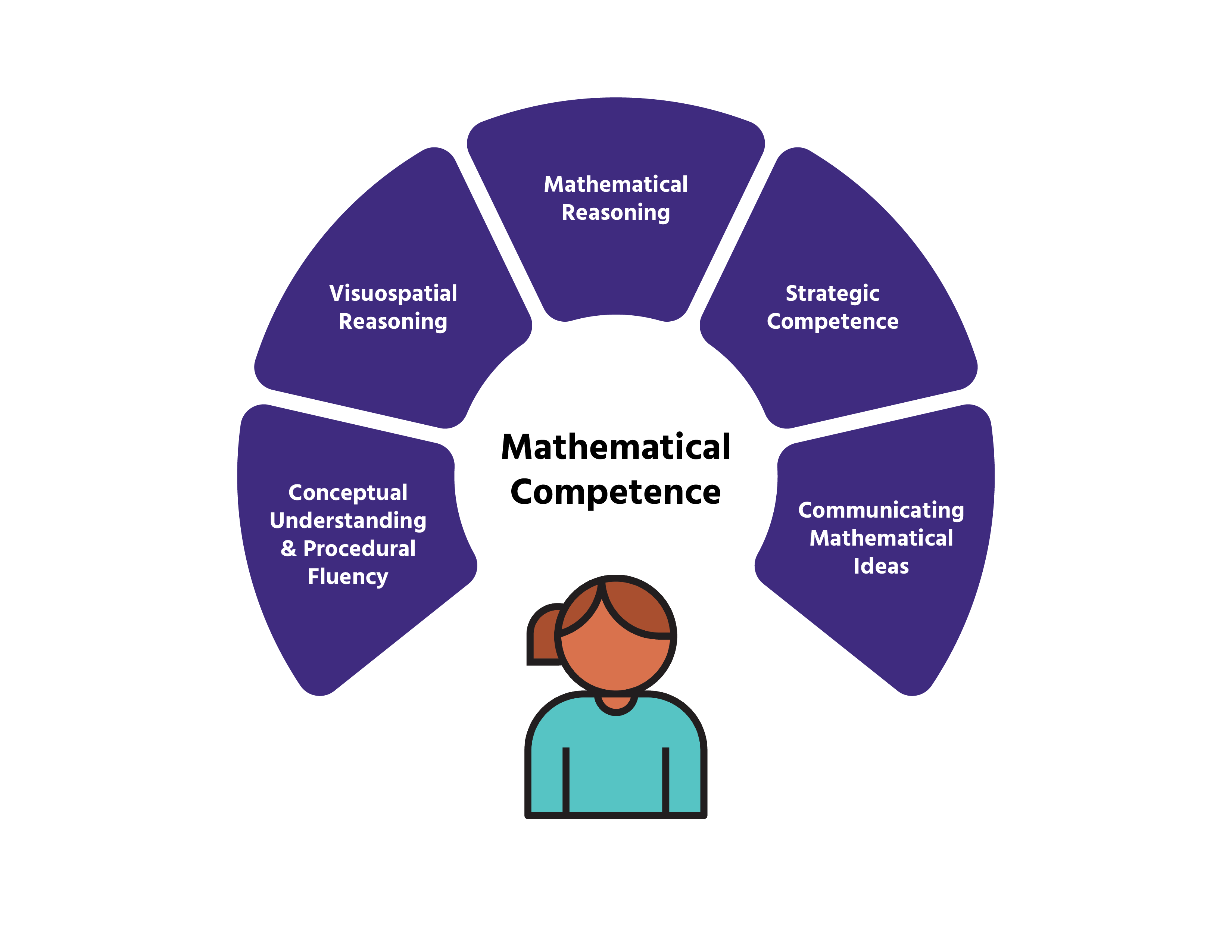

Brain research tells us that providing opportunities for students with these levers of mathematical competence can create the conditions for high-quality math instruction and an active learning environment. We explore mathematical competence more throughout this blog.
Moving beyond “what” students learn, mathematical competence hinges on understanding “why” and “how.” Brain research sheds light on this complex process, revealing how interconnected networks support the growth of mathematical knowledge and skills.
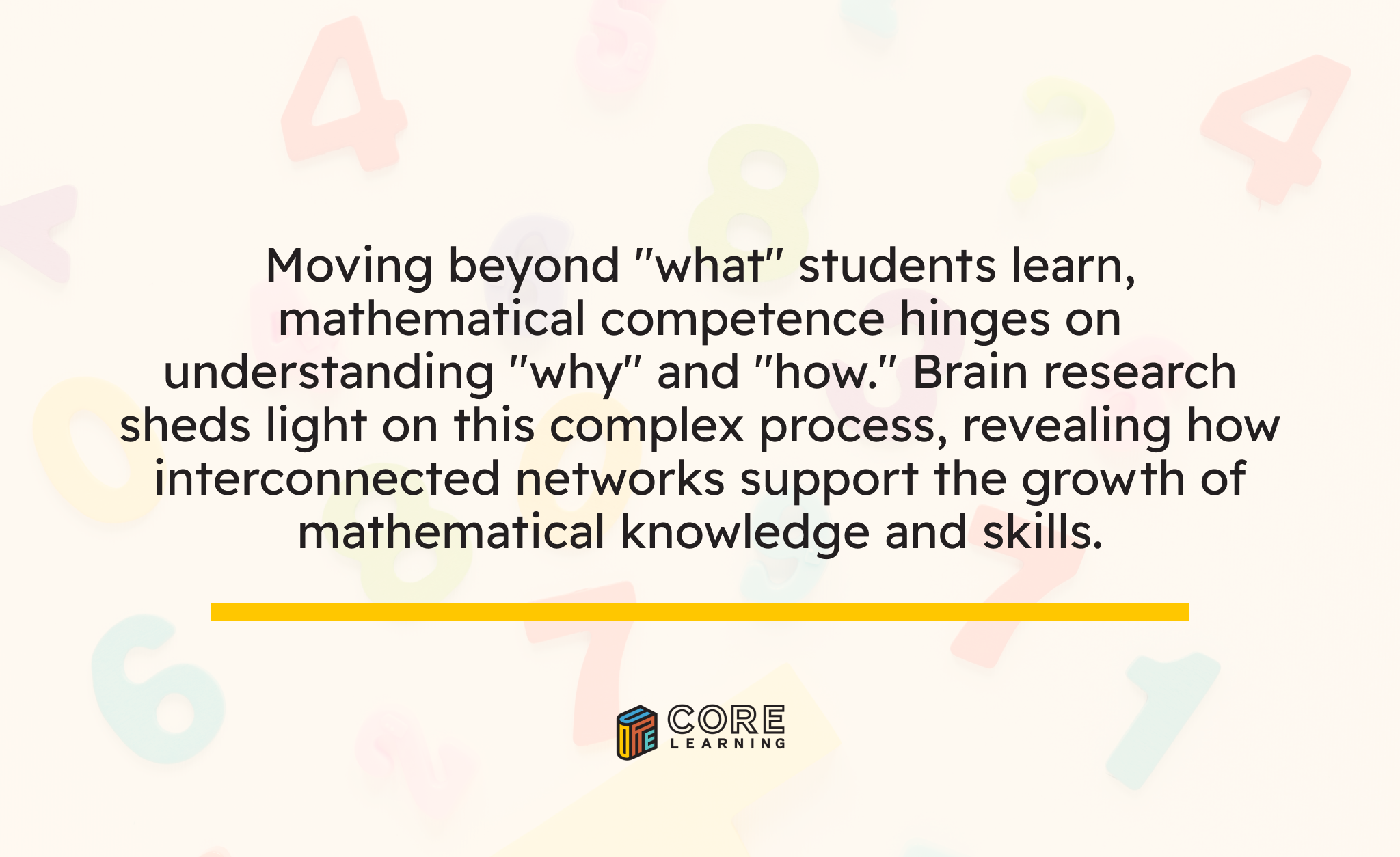

While neuroscience provides a window into the brain’s remarkable ability to learn and adapt, its intricate workings remain partly hidden despite extensive research. However, engaging with math is akin to conducting a brain symphony, where different regions harmonize to unlock deeper understanding and forge connections between mathematical concepts. This neural orchestra holds the potential to tackle math challenges with creativity and confidence, transforming learning into a thrilling performance.


The Visuospatial Network plays a crucial role in visualizing and manipulating abstract symbols and relationships in math. This network is active when we mentally rotate shapes, imagine fractions on a number line, or track spatial relationships between numbers.
The Semantic Network is responsible for understanding the meaning behind mathematical symbols and equations. This network helps us connect new concepts to existing knowledge, choose the appropriate representations and strategies for solving problems, and apply mathematical principles in real-world situations.
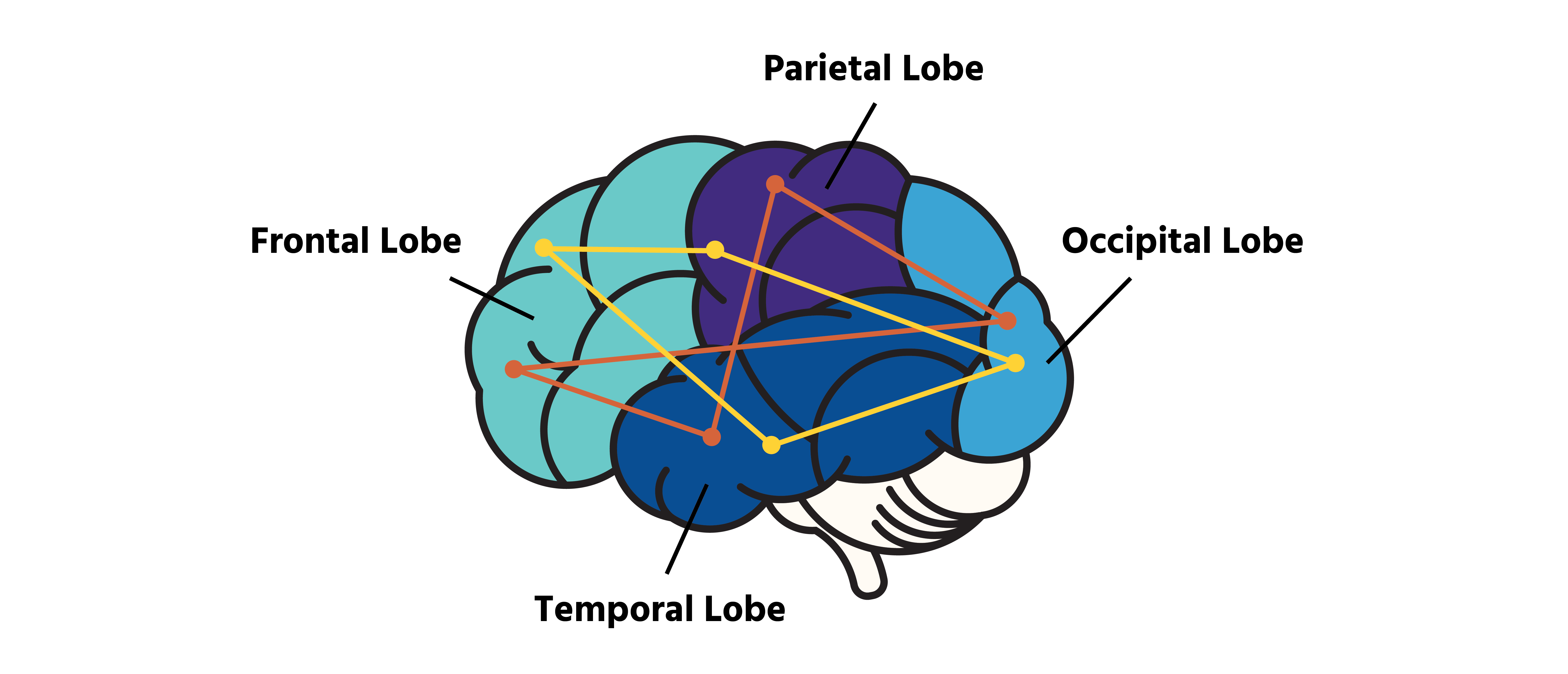
These networks, while impressive, merely hint at the vast orchestra of abilities conducted by the human brain. The brain’s remarkable flexibility in learning, representing, abstracting, and making connections lays the groundwork for sophisticated cognitive skills like critical thinking and problem-solving. By actively analyzing, synthesizing, and generalizing information, we become efficient problem solvers who can apply knowledge to new situations, and navigate uncertainty and complex problems with confidence and creativity.
Ready to unlock your students’ mathematical potential? In this section, we explore practical techniques informed by how the brain learns math to supercharge your classroom.
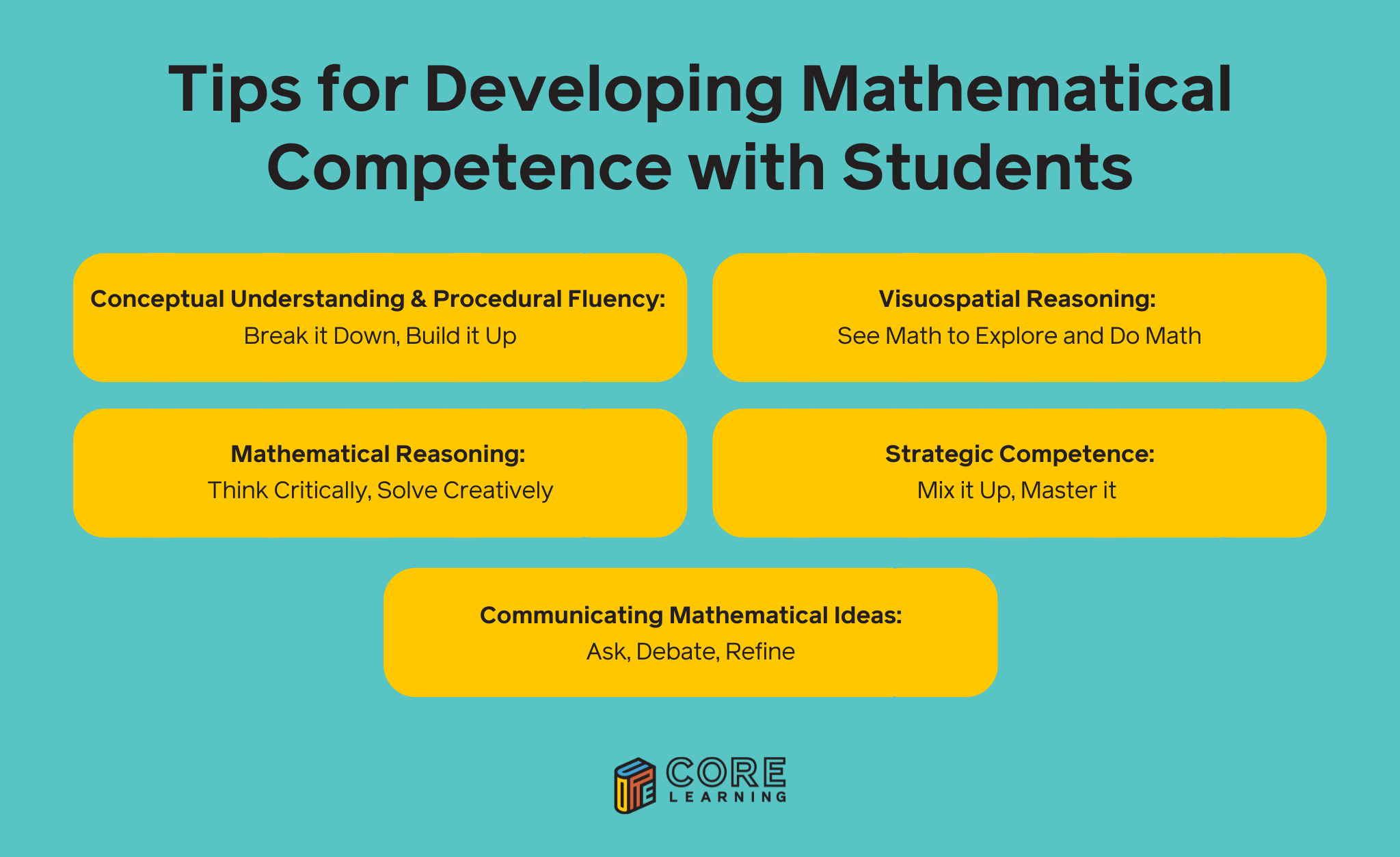

Mastering complex math isn’t a solitary climb up a rigid ladder; it’s a collaborative journey through intricate landscapes. We navigate these landscapes by constructing a dynamic path, weaving together two essential threads: conceptual understanding, the rich tapestry of interconnected ideas, and procedural fluency, the nimble tools to navigate math experiences effectively.
To support this engaging learning journey, consider using chunking. This involves presenting information in smaller, manageable pieces that students can gradually integrate into larger, more complex ideas. By guiding students to connect, process, and condense key concepts into bite-sized units, you enable them to anchor new information onto previously acquired knowledge, leading to deeper and more lasting understanding. Chunking isn’t about dividing a problem into smaller pieces; it’s about identifying meaningful connections and patterns within and between concepts. Chunking grants time to decode the language of math and understand the formulas, thereby enabling students to grasp the deeper meaning behind the symbols, equations, and graphs.
Visuospatial reasoning bridges the gap between abstract concepts and human intuition, making mathematics more accessible and tangible. This bridge connects abstract symbols to tangible experiences through visualizations, diagrams, and manipulatives. Traversing this bridge strengthens neural pathways, leading to deeper understanding and lasting comprehension. But it’s not a one-way street.
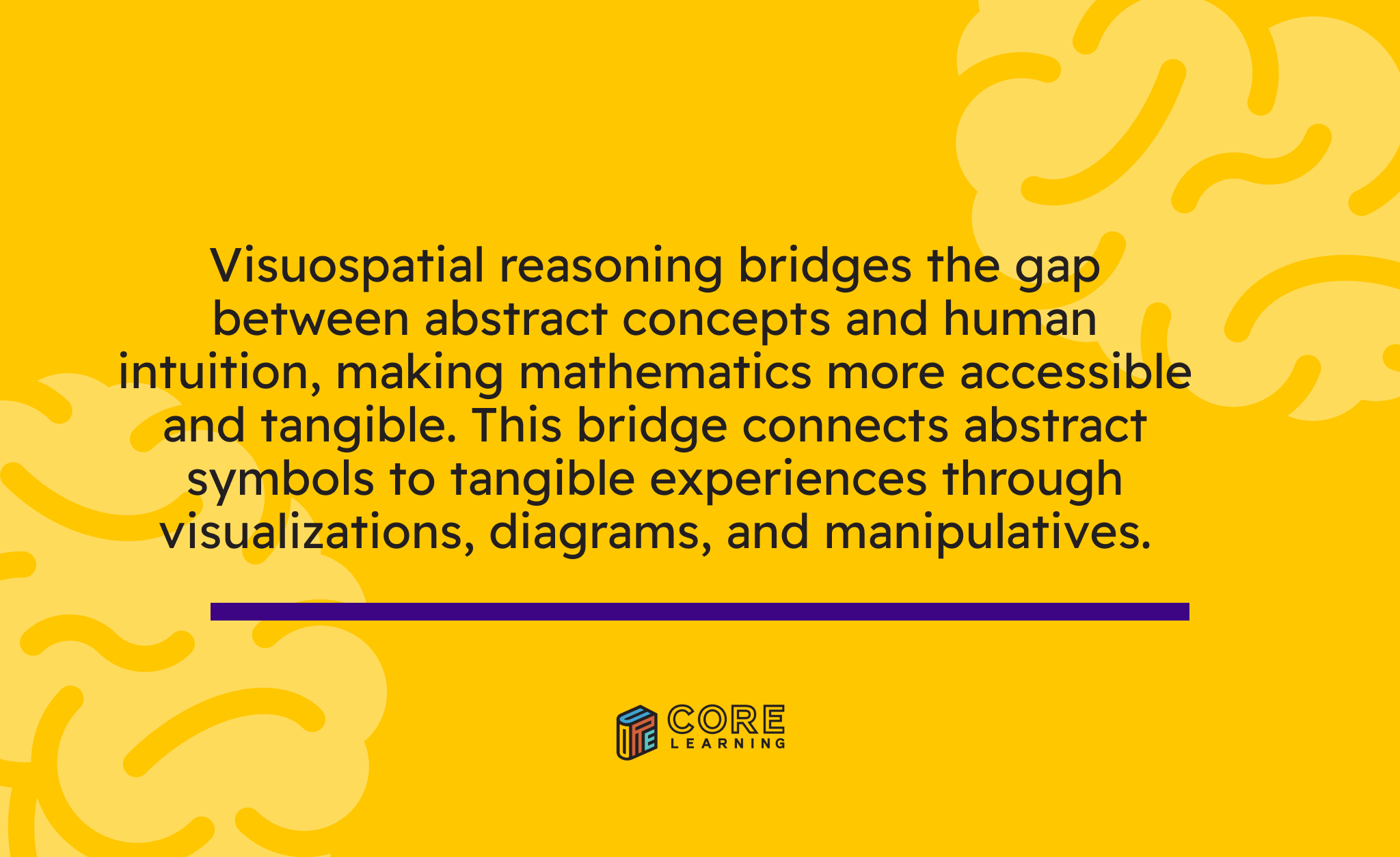

The ability to translate mathematical concepts into various representations (equations, graphs, diagrams, and real-world scenarios) cultivates flexible mental models and robust problem-solving skills. This process reveals the underlying principles, relationships, and structures inherent in mathematics. By actively manipulating and connecting these different representations, students gain a deeper understanding of the interconnected and systematic nature of mathematical concepts.
Mathematical reasoning is the art of navigating the world of numbers and ideas. It’s the ability to think critically, creatively, and flexibly while weaving together logic and ingenuity to make sense of patterns, connections, and relationships. It’s about connecting symbols and representations, exploring diverse strategies like estimation, modeling, and analogies, and ultimately solving problems in innovative ways. This multifaceted skill empowers us to unravel the beauty and intricacies of mathematics, not just through rigid logic but through a vibrant interplay of intuition, imagination, and perseverance.
Intentional practice of familiar problems strengthens dedicated neural pathways, making them efficient for specific approaches; however, this repetition alone limits flexibility. Interleaving takes learning beyond mastering individual problems. It challenges the brain to retrieve and dynamically combine different concepts and strategies to solve ever-changing problems. Interleaving doesn’t just strengthen existing neural pathways; it forges new connections between them, weaving a richer, interconnected web of understanding. This web makes thinking more nuanced, adaptable, and capable of tackling diverse challenges with a wider range of strategies and approaches.
Mathematical communication is a multifaceted skill that leverages a diverse repertoire of skills, including precise language, symbols, diagrams, graphs, and real-world connections. Guided by critical thinking and clear reasoning, it serves to justify problems’ solutions, foster understanding, and illuminate mathematical concepts.
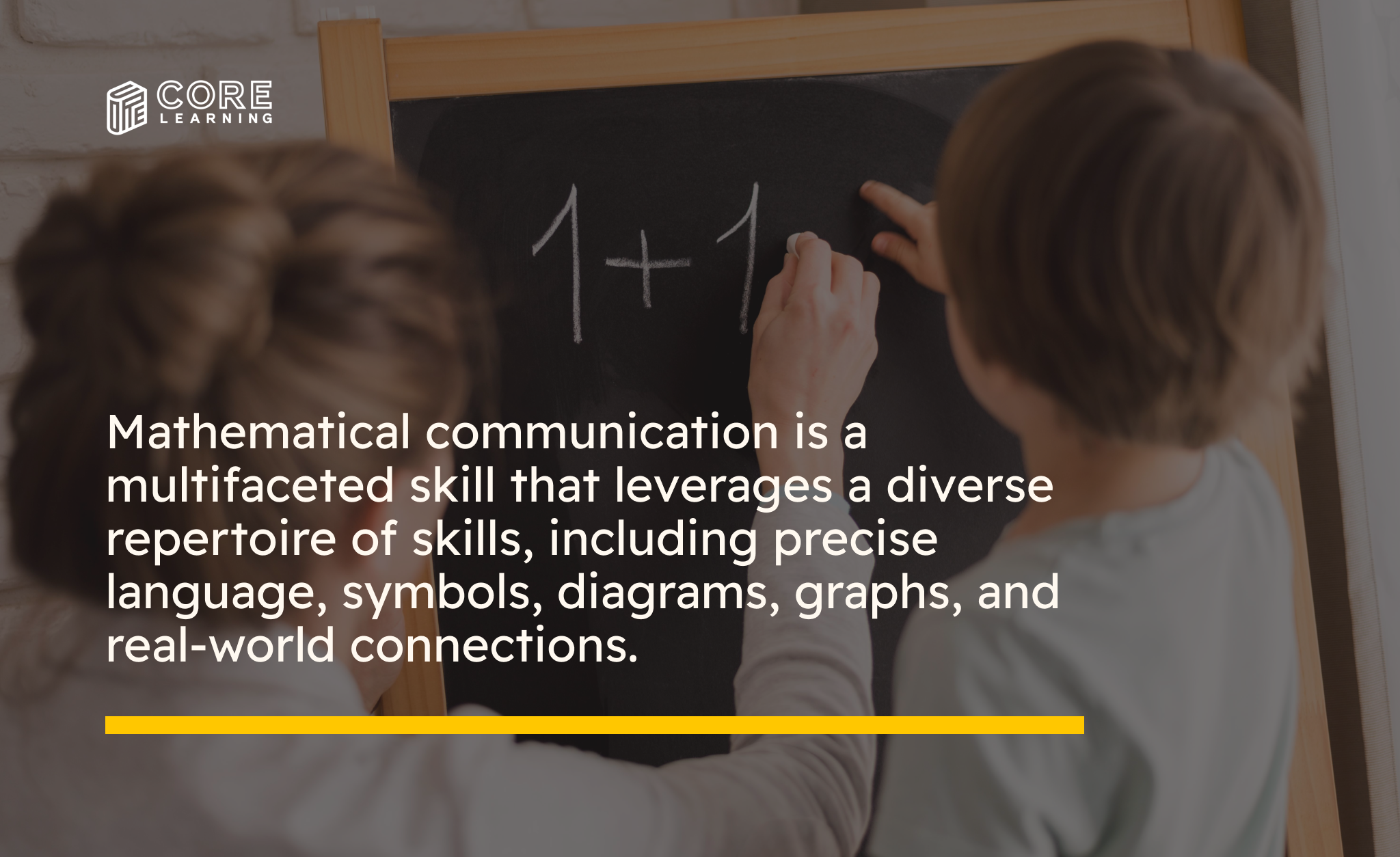

This communication can manifest in both formal and informal ways. Formal modes involve precise symbolic language and logical expressions, often used in proofs and written arguments. Informal modes, such as discussions and collaborative activities, involve sense-making, exploration, and refining understanding. Formal and informal communication are essential for effective problem-solving and navigating the complexities of mathematics. Ultimately, effective communication in this realm hinges on the ability to construct clear, concise, and compelling arguments that not only justify mathematical conclusions but also illuminate the underlying concepts.
Brain science is revealing the intricate pathways to truly impactful and long-lasting math learning, paving the way for a fundamental shift in how we teach and engage students. Instead of a complete overhaul, we can strategically infuse our classrooms with evidence-based practices informed by the latest understanding of how brains build mathematical competence. Our goal is to empower teachers to cultivate mathematical competence in every student.
Which one of these five components of mathematical competence will you cultivate within your students? What will you do to help them develop their mathematical competence and deepen their understanding of mathematics?
Check out our “Which One Doesn’t Belong” resource, designed specifically for classroom teachers. This instructional guide offers a powerful and accessible routine to refine your students’ mathematical skills and ignite their curiosity and skepticism. Embrace the science behind learning, refine your practice, and watch your students flourish in the world of math!
Mathematical Competence
Neuroscience
Cognitive Psychology